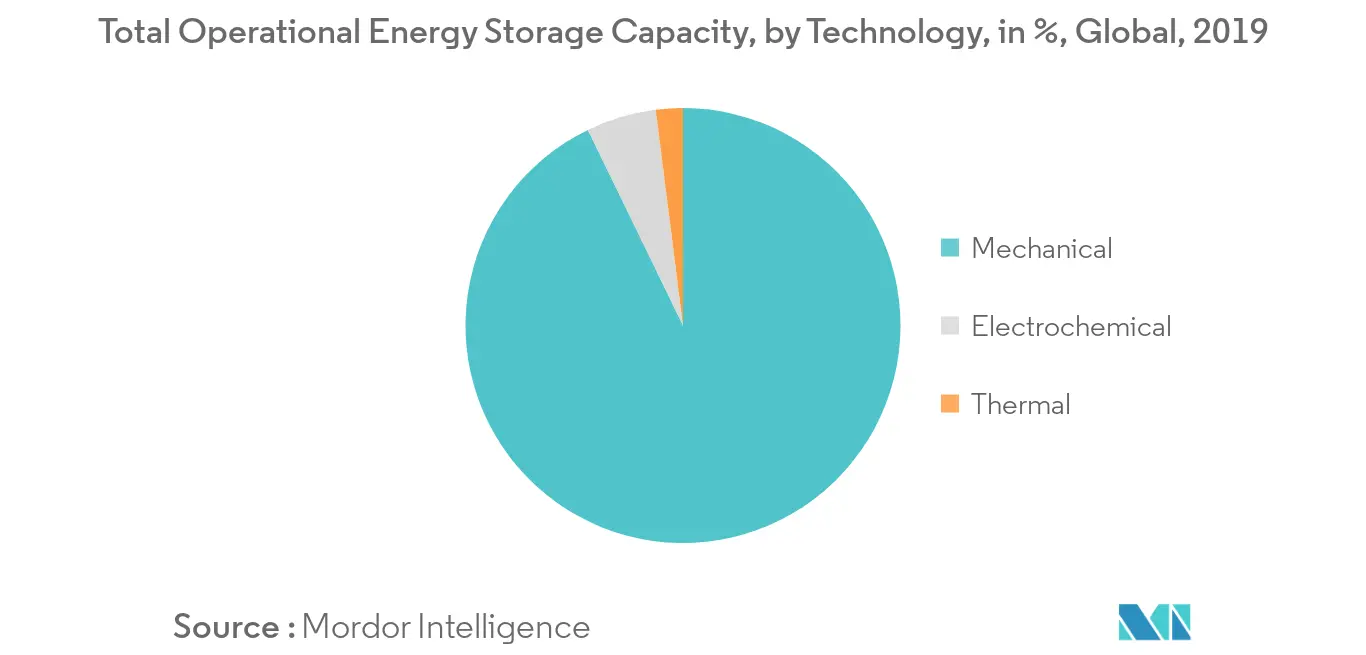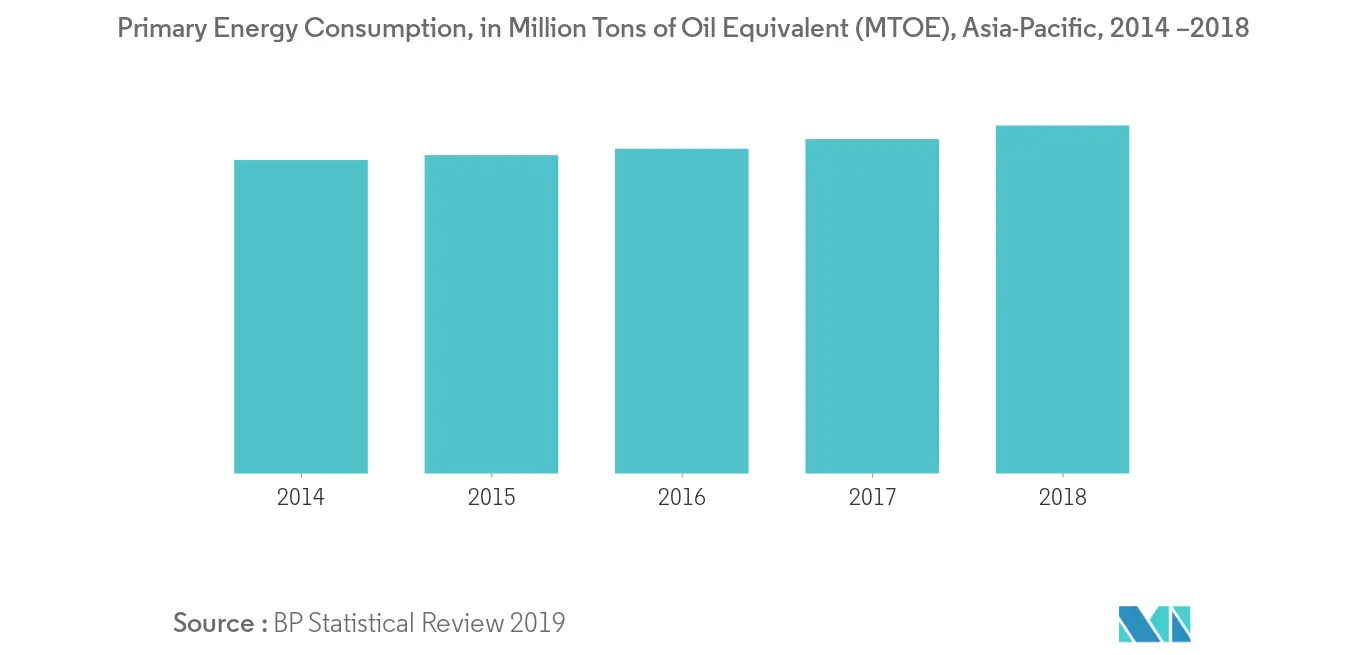Market Trends of Advanced Technologies Industry for High Power Energy Storage
This section covers the major market trends shaping the High Power Energy Storage Advanced Technologies Market according to our research experts:
Electrochemical Segment Expected to Grow the Fastest Rate
- The electrochemical segment includes technologies like lithium-ion, sodium-sulfur battery, lead batteries, and others. However, among these technologies, the lithium battery is the most popular type of energy storage system, especially in the use of electric vehicles.
- Lithium-ion batteries are a rechargeable type of cell that is commonly used in electronic devices and energy vehicles. These batteries are also being used for renewable energy storage from sources such as solar and wind. The energy densities of these batteries are quite high and have a round trip efficiency of 85% to 95%. The lithium-ion battery is a low maintenance battery, and the cells of the battery cause little harm to the environment when disposed of.
- In March 2020, Total S.A, French oil major, launched a battery-based energy storage project in Mardyck, at the Flandres Center, in Dunkirk. With a storage capacity of 25 megawatt-hours (MWh) and an output of 25 megawatts (MW) of power, the new lithium-ion energy storage system is expected to be going the largest in France. The project is part of government policy to support the development of electrical capacity through capacity mechanisms. The project is expected to be commissioned by the end of 2020.
- In 2019, Researchers from the University of Wollongong had manufactured a nanomaterial that acts as a superior cathode for room-temperature sodium-sulfur batteries, making them a more attractive option for large-scale energy storage. Room-temperature sodium-sulfur batteries are an attractive proposition for next-generation energy storage, which will be required to meet increasing demands. A superior room-temperature sodium-sulfur battery with high energy density and long cycling life would provide a low-cost and competitive technology for large-scale stationary storage, thus promoting the shift towards renewable energy.
- Among the electrochemical segment, one of the most anticipated technologies is the Flow batteries technology. Vanadium is the most used electrolyte in the usage of flow batteries; however, research is going on, in 2020, to find a cheaper and more potent electrolyte with certain organic compounds showing positive results. The organic flow batteries have an added benefit that the organic composition may be changed in accordance with the consumers. The research and development of the flow batteries technologies may alter the market.
- The electrochemical segment contributed to around 5.2% of the total operational energy storage project capacity (MW), until March 2020. Most of which was dominated by lithium-ion batteries. The electrochemical segment is expected to increase further due to its flexibility and lower cost of storage.
- Hence, owing to the above points, the electrochemical sector is likely to grow the fastest in the advanced technologies market for high power energy storage market during the forecast period.

Asia-Pacific to Dominate the Market
- The Asia-Pacific region is expected to dominate the market in the forecast period owing to the rising industrialization, growing renewable energy and increasing deployment of electric vehicles in countries like China and India, and the high demand for electronics with urbanization and increasing economic growth, the use of advanced energy storage systems are expected to witness significant growth in the region.
- The primary energy consumption in the Asia-Pacific region increased, by 4.1%, to 5985.8, in 2018 from 5748.0, in 2017. Increasing population, rising industrialization, and growing urbanization are expected to aid the growth in the demand for energy. An increase in energy is expected to be the primary driver for the energy storage market in the region.
- In 2019, India witnessed the emergence of a grid-scale battery energy storage system (BESS) system started to come up. Solar Energy Corporation of India (SECI) invited bids for 3.6 gigawatt-hours of storage connected to 1.2 gigawatts of solar on India's interstate transmission system, the most significant battery solicitation seen in the country.
- Battery energy storage system (BESS) is more flexible in terms of their usage as technologies like pumped hydro storage, or compressed air storage require special geographical features to work, whereas the storage technologies like lithium-ion and flow batteries do not require such preconditions.
- The 3.6 GW, energy storage project, being built by China in Fengning County, is expected to help the nation to 40 GW of pumped hydro capacity in 2020, as it is stipulated in the government's 13th five-year plan. Pumped hydro storage energy technology is the largest energy storage technology applied by the country to use as a backup power source.
- Hence, the Asia-Pacific region is expected to dominate the market due to its increasing demand for energy and shift towards renewable energy with China at the forefront.


